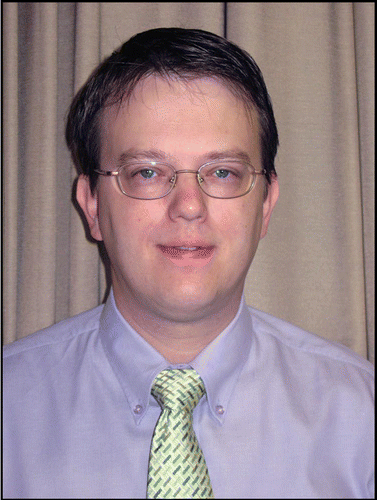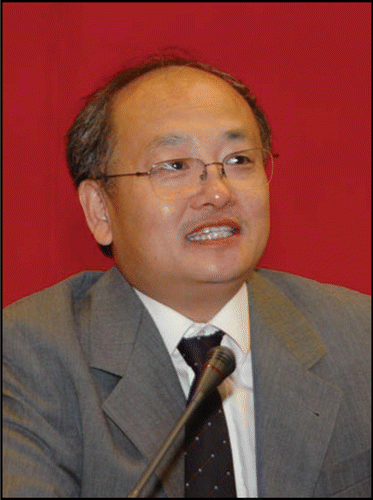Abstract
With the ageing of population profiles worldwide, neurodegenerative diseases and neurological disorders are ever more important challenges for neuroscience research. Cell adhesion and migration are crucial in the complex interplay of molecules and cells underlying nervous system function and dysfunction. In this special issue recent advances in understanding of the molecular and cellular events controlling neuronal and brain function and dysfunction are reviewed.
With the ageing of population profiles worldwide, neurodegenerative diseases and neurological disorders are ever more important challenges for neuroscience research. Cell adhesion and migration are crucial in the complex interplay of molecules and cells underlying nervous system function and dysfunction. In this special issue recent advances in understanding of the molecular and cellular events controlling neuronal and brain function and dysfunction are reviewed.
The first three papers in this special issue focus on protein mole- cules involved in nervous system function and dysfunction. Dr. Gianfranco Gennarini and colleagues discuss the regulation and functions of F3/contactin, an immunoglobulin superfamily glycoprotein, which has important roles in cell adhesion and migration and is known to interact with the Notch pathway in developmental control. Focusing particularly on mouse F3/contactin they discuss the regulation of the expression of the glycoprotein and the properties and developmental significance revealed by the morphological and functional phenotypes apparent in transgenic models. F3/Contactin is one member of a family of six molecules collectively known as the contactins: F3/contactin, TAG-1, BIG-1, BIG-2, NB-2 and NB-3. Drs. Yasushi Shimoda and Kazutada Watanabe introduce the contactin family and discuss the emerging understanding of the roles of the contactin family in controlling nervous system development and function. They provide an overview of recent progress in understanding the roles of BIG-2, NB-2 and NB-3 in control of development and the address the potential role of contactins in nervous system dysfunction in neuropsychiatric disorders. Discussing the role of proteins in nervous system dysfunction, Drs. Linda Lin-yan Wu and Xin-Fu Zhou review the roles of huntingtin (Htt) and huntingtin associated protein 1 (HAP1) in control of intracellular trafficking and how this may contribute to the dysfunction resulting in Huntington disease. They discuss how the ubiquitous expression of Htt contrasts with the enriched expression of HAP1 in neurones and the implications for the neuropathology of Huntington disease.
Oxidative processes and mitochondrial dysfunction are common factors linking molecular processes to cellular death in many nervous system dysfunctions. The next three papers in this special focus address recent advances in understanding of oxidative stress and mitochondrial function in neuronal function and dysfunction. Drs. Jing Wang and Zhigang He introduce the Wallerian degeneration slow (Wlds) mouse strain and explore how this mouse suggested a role for nicotinamide adenine dinucleotide (NAD) in axon degeneration. Reviewing recent research they discuss the potential involvement of NAD synthesis, NAD consumption and NAD-dependent proteins and small molecules in axon degeneration. Drs. Alejandro Gella and Nuria Durany discuss how the accelerated oxidation of glycated proteins contributes to the progression of neurodegeneration in Alzheimer disease. Appreciation of the molecular mechanisms controlled by oxidative stress suggests new strategies for the treatment of Alzheimer disease. Mitochondrial dysfunction can underly oxidative stress and subsequent apoptosis. Dandan Sun and colleagues review the contribution of dysregulation of mitochondrial calcium ion homeostasis in triggering mitochondrial dysfunction and recent evidence that ion transporters contribute to ischaemia-induced calcium dysregulation. Ultimately, these events can lead to cell death.
The last four papers in this special issue turn to review cellular events controlling nervous system damage and repair. Dr. Toshifumi Itano and colleagues review the roles of stem cells and the tissue microenvironment in promotion of glial and axonal regeneration following spinal cord injury. Dr. Jia Liu and colleagues address the dynamic signalling interactions of multiple pathways controlling neural stem cell fate determination. They show how the interplay of complex molecular pathways influencing cellular functions such as cell adhesion and migration are important in controlling neural stem cell fate. Dr. Bor Luen Tang highlights the important role of neuronal protein trafficking in the pathogenesis of Alzheimer disease pointing to the ways in which detailed understanding of the control of neuronal trafficking processes will reveal novel therapeutic strategies. Finally, Dr. Xi-Min Li, Dr. Qing-Rong Tan and colleagues review the often overlooked neuroprotective effects of atypical antipsychotic drugs, which are prescribed not only for schizophrenia but also for other conditions including psychosis in Alzheimer disease.
Gavin S. Dawe and Zhi-Cheng Xiao
Guest Editors
Additional information
Gavin S. Dawe studied neuroscience at the University of Edinburgh. On graduating he moved to the Institute of Psychiatry, London, where he worked on the functional connectivity of neural grafts jointly in the Departments of Experimental Psychology and Neuroscience and gained a Ph.D. in Pharmacology. After periods as a Postdoctoral Researcher at the Institute of Psychiatry, a Senior Scientist with ReNeuron Limited and a Consultant Postdoctoral Associate with Eli Lilly and Company, he joined the National University of Singapore as an Assistant Professor in 2001.
Born in Shanghai, China, Xiao Zhi-Cheng holds a Doctor of Natural Science Degree from Swiss Federal Institute of Technology, Zurich. He was also trained in Harbin Medical University, University of Science and Technology of China, and Beijing Medical University as a medical student and an MSc and PhD candidate. He was a postdoctoral fellow of University of California, Irvine, University of Southern California, University of Rochester in USA, McGill University in Canada, and University Hamburg in Germany. He was principle investigator and associate professor at Singapore General Hospital, Institute of Molecular and Cell Biology, Singapore and University of Hong Kong. Recently, he joined GlaxoSmithKline as a director of Innovative Research.

